Chelyabinsk Meteorite
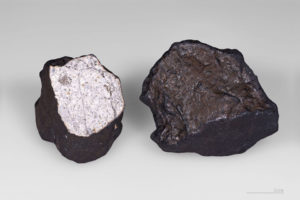
The Chelyabinsk meteorite is the fragmented remains of the large Chelyabinsk meteor that fell February 15th, 2013. The descent of the meteor visible as a giant fireball shattered windows in 7,200 buildings and injured over 1,500 people. The largest framents of this meteorite were found at the bottom of the Chebarkul Lake, in Chelyabinsk Russia.
Hoba
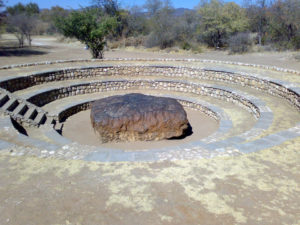
This meteorite lies on the farm Hoba West in Namibia and has never been moved elsewhere because of its exceptionally greater mass. With a mass of about 60 tons, it is the largest meteorite known to mankind. It is tabloid in shape and composed of metal. It is believed to have landed on Earth about 80,000 years ago. In 1955, it was declared as a national monument and has since then been attracting visitors from different parts of the world.
ALH 84001
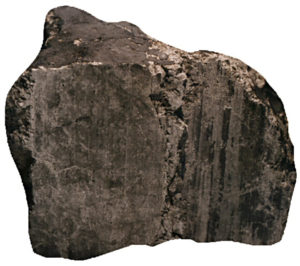
It was found in the Allan Hills, Antarctica in December 1984. Meteorite hunters of the United States working on ASMNET project discovered this meteorite. When discovered, its mass was 1.93 kilograms and its rock was reportedly one of the oldest forms. This meteorite was supposed to have come from Mars. Later it was believed to consist of some traces of the life on Mars and this made ALH 84001 more famous than ever.
Orgueil
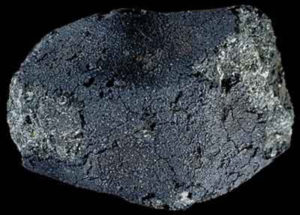
This meteorite fell in France in 1864 and is a relatively older meteorite. The fall of this meteorite consisted of small stones that covered a massive area. This is one of those eight meteorites that belong to the CL chondrite group. A striking feature of this type of meteorite it that its composition is similar to that of the Sun. This meteorite is one of the most researched ones. For purposes of deeper study of the composition of this meteorite, it was split into pieces. Currently, it exists in the form of pieces kept in different museums in Europe and the United States.
Gibeon
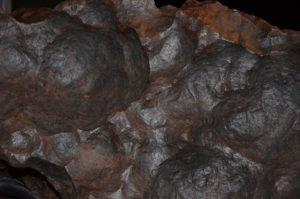
The fall of the Gibeon meteorite is the most extensive meteorite shower known on Earth which covers an elliptical area of about 275 by 100 kilometers Most fragments fell just southeast of Gibeon. To date, hundreds of specimens with a weight of more than 25 tons have been recorded.
Ensisheim, France 1492

“On Wednesday, Nov. 7, the night before St.Martin‘s day, in the year of our Lord 1492, a singular miracle happened: for between the hours of eleven and twelve a loud clay of thunder took place, with a long continued noise, which was heard at great distance; and a stone fell from the heavens in the Ban of Ensisheim which weighed 260 pounds. This meteorite fall was widely written about in stories
Allende
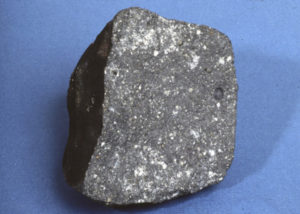
The Allende meteorite — Chihuahua district, Mexico – fell on February 8, 1969 after a bright bolide was seen in the very early morning hours. It turned out to belong to the relatively rare class of meteorites – the carbonaceous chondrites – and was found in a strewn field estimated to cover over 250 km2. The ellipse was 50 km long and 12 km wide. More than two metric tons of the meteorite have been collected in hundreds of fragments, the largest of which had a mass of about 110 kg but unfortunately broke up on impact.
Canyon Diablo
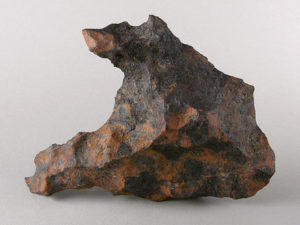
The Canyon Diablo meteorite comprises many fragments of the asteroid that impacted at Barringer Crater (Meteor Crater), Arizona, USA. Meteorites have been found around the crater rim, and are named for nearby Canyon Diablo, which lies about three to four miles west of the crater. The asteroid fell about 50,000 years ago. The meteorites have been known and collected since the mid-19th century and were known and used by pre-historic Native Americans. The Barringer Crater, from the late 19th to the mid-20th century, was the center of a long dispute over the origin of craters that showed little evidence of volcanism. That debate was settled in the 1950s thanks to Eugene Shoemaker’s study of the crater.
Sikhote-Alin
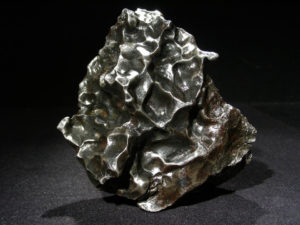
Sikhote-Alin is an iron meteorite that fell in 1947 on the Sikhote-Alin Mountains in eastern Siberia. Though large iron meteorite falls had been witnessed previously and fragments recovered, never before in recorded history had a fall of this magnitude been observed. An estimated 70 tonnes of material survived the fiery passage through the atmosphere and reached the Earth.At around 10:30 AM on February 12, 1947, eyewitnesses in the Sikhote-Alin Mountains, Primorye, Soviet Union, observed a large bolide brighter than the Sun that came out of the north and descended at an angle of about 41 degrees. The bright flash and the deafening sound of the fall were observed for 300 kilometres (190 mi) around the point of impact not far from Luchegorsk and approximately 440 km (270 mi) northeast of Vladivostok. A smoke trail, estimated at 32 km (20 mi) long, remained in the sky for several hours. As the meteorite, traveling at a speed of about 14 km/s (8.7 mi/s), entered the atmosphere, it began to break apart, and the fragments fell together. At an altitude of about 5.6 km (3.5 mi), the largest mass apparently broke up in a violent explosion.
Fukang, China
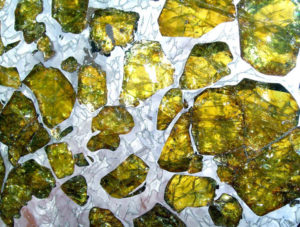
The Fukang meteorite is a meteorite that was found in the mountains near Fukang, China in 2000. It is a pallasite–a type of stony–iron meteorite with striking olivine crystals. In 2000 near Fukang (China), a Chinese dealer got a 1003 kg mass from Xinjiang Province, China. He removed from the main mass about 20 kg and in February 2005 the meteorite was taken to the Tucson Gem and Mineral Show. There it was seen by Dante Lauretta of University of Arizona. Afterwards the mass was investigated by D.S. Lauretta, D. Hill, M. Killgore, D. Della-Giustina and Y. Goreva at Southwest Meteorite Center, Lunar and Planetary Laboratory, University of Arizona in Tucson.
Stony–iron
Main Group
Pallasite (MGP)
Composition
Fe 89.9 wt%, Ni 9.0 wt%, P 0.62 wt%, Co 0.51 wt%; Ge 41 µg/g, As 26 µg/g, Ga 19.1 µg/g, Pd 5.1 µg/g, Au 2.6 µg/g; Ir 43 ng/g.
Muonionalusta, Sweden
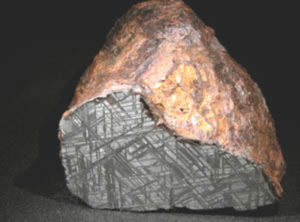
The Muonionalusta is a meteorite classified as fine octahedrite, type IVA (Of). The first fragment of the Muonionalusta was found in 1906 in a 25-by-15-kilometre (16 × 9.3 mi) area approximately 140 kilometres (87 mi) north of the Arctic Circle, in the Pajala district, Norbbotten, Sweden. Around forty pieces are known today, some being quite large. It was first described in 1910 as Muonionalusta, therefore named after the municipality of Muonio, by professor A. G. Högbom and studied in 1948 by Professor Nils Göran David Malmqvist. The Munionalusta, probably the oldest meteorite known to man, marks the first occurrence of stishovite in an iron meteorite. Studies have shown it to be the oldest discovered meteorite impacting the Earth during the Quaternary period, about one million years ago. It is quite clearly part of the iron core or mantle of a planetoid, which shattered into many pieces upon its fall on our planet. Since landing here this meteorite has experienced four ice ages. It was unearthed from a glacial moraine in the northern tundra. A strongly weathered surface covered with cemented faceted pebbles leaves no doubt that its sojourn on Earth has been long and dramatic. New analysis of this strongly shock-metamorphosed iron meteorite has shown a content of 8.4% nickel and trace amounts of rare elements – 0.33% ppm gallium, 0.133% ppm germanium and 1.6 ppm iridium. It also contains the common minerals chromite, Daubreélite, schreibersite, Akaganéite and inclusions of troilite. For the first time, analysis has proved the presence of a form of quartz altered by extremely high pressure – stishovite, probably a pseudomorphosis after tridymite. From the article “First discovery of stishovite in an iron meteorite”
Brenham, KS
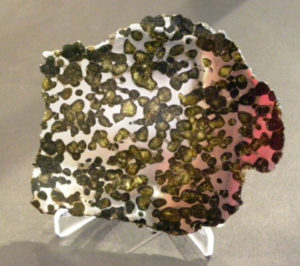
Thousands of years ago, a meteor scattered several tons of meteorite fragments in the vicinity of Brenham, Kansas. The iron bearing fragments were found by Native Americans and pieces have been found as far away as Hopewell Indian mounds in Ohio. The iron in the meteorite was used to make ornaments and implements. Fragments were found by settlers in the 1880s and it was several years before it was discovered that they were from a meteor. But the Brenham Meteorite still didn’t become famous until the 1920s when H.H. (Harvey Harlow) Nininger from McPherson College found a Haviland crater associated with this meteorite. More fragments of the Brenham Meteorite are found every year and more than three tons of fragments have been found to date. Although some large fragments have been found, most pieces are the size of a grapefruit or smaller.
Type
Stony–iron
Class
Anomalous Pallasite (Pallasite-an)[1]
Composition
8.5% Ni, 21.5 ppm Ga, 55.5 ppm Ge, 0.023 ppm Ir
Willamette Meteorite
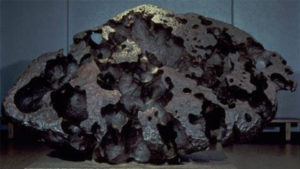
This is an iron-nickel meteorite that was discovered in the United States near Oregon. It is the largest of the meteorites found in the United Sates as also the sixth largest in the world. Probably the meteorite had landed in the region, which is now known as Canada. This meteorite weighing about 15.5 tons is one of the very large meteorites of the world.
Seymchan Russia
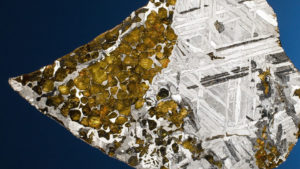
It was found in the dry bed of river Hekandue, a left tributary of river Jasačnaja in the Magadan district, Russia, near the settlement of Seymchan. The main mass of 272.3 kg was found in June 1967 by the geologist F. A. Mednikov during a survey. The mass was a triangual shaped thumbprinted meteorite lying among the stones of the brook bed. A second specimen of 51 kg was found in October 1967 at a distance of 20 m from the first one by I. H. Markov with a mine detector 1967. The main mass was turned in to the Academy of Sciences of the USSR. During a new expedition in 2004, Dmitri Kachalin recovered about 50 kg of new material. Remarkably, many of the new specimens (about 20%) were found to contain olivine crystals and so revealed the silicated nature of the meteorite. The pallasitic structure was not discovered previously during studies on small metal-only sections of the original mass. Stoney-Iron, Pallasite, Composition 9.15% Ni, 24.6 ppm Ga, 68.3 ppm Ge, 0.55 ppm Ir.
